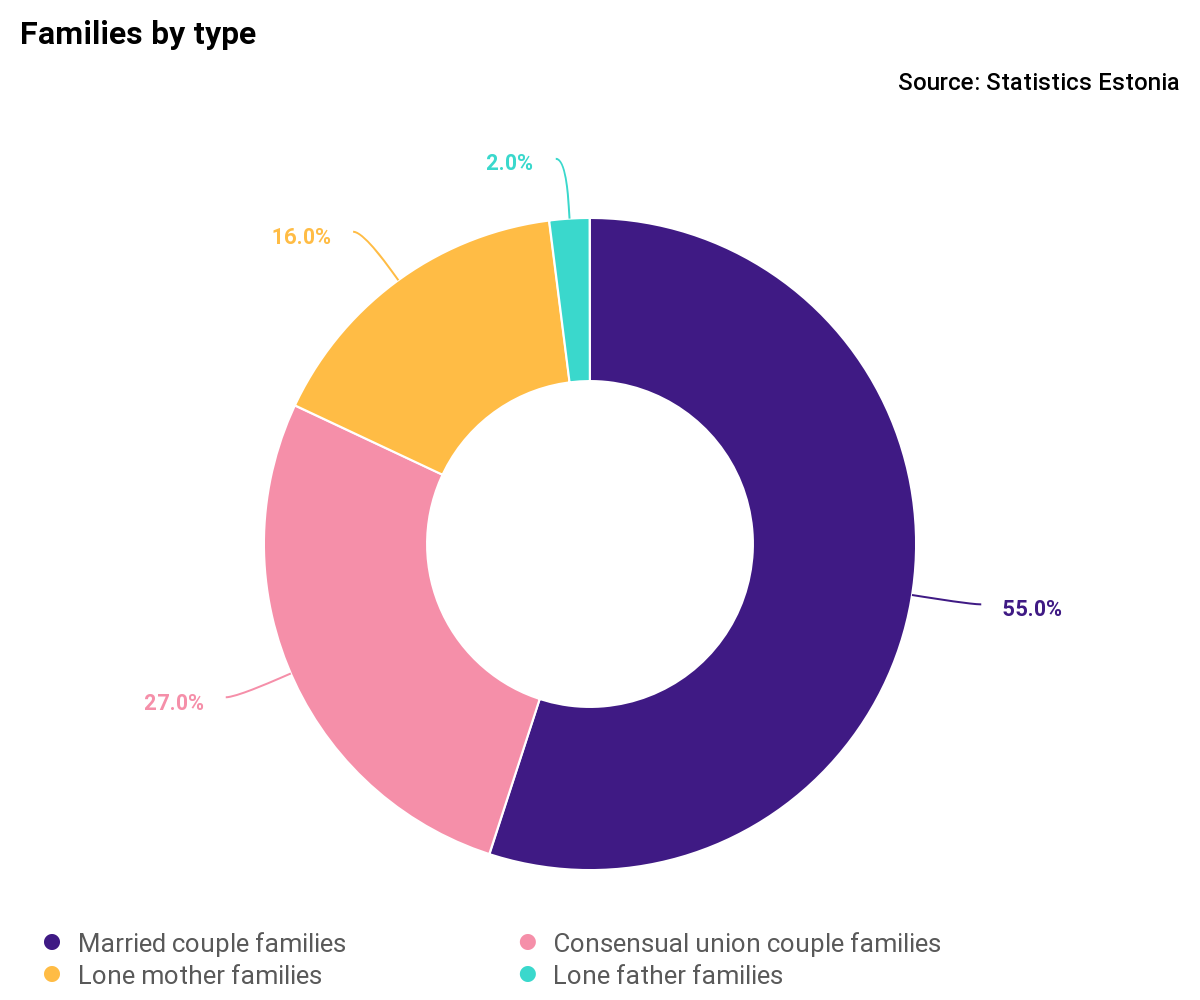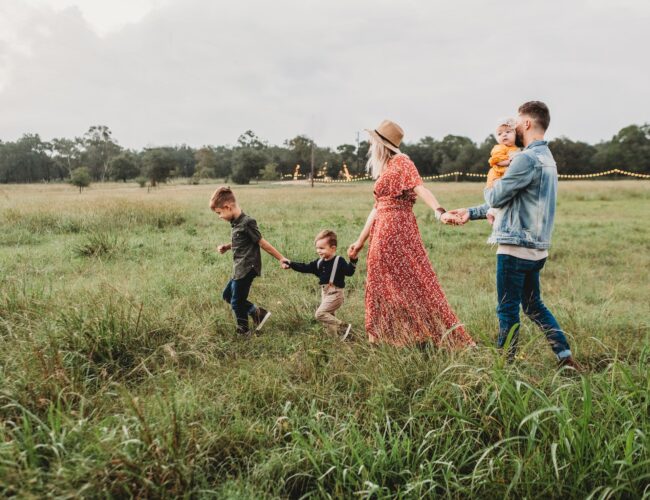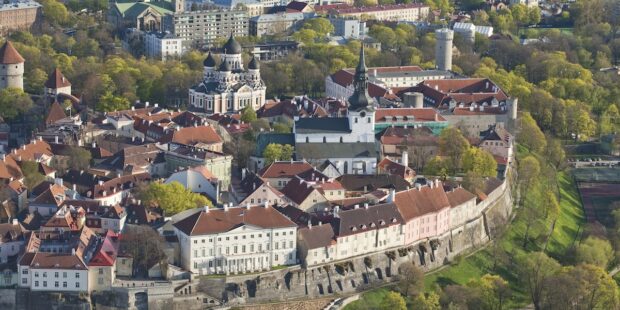Population census: the average family size in Estonia has increased
Text Mark Taylor Photo Jessica Rockowitz / Unsplash
According to the results of the 2021 population and housing census, there are 341,995 families in Estonia, of which almost half, or 49 per cent, are two-member families. Compared with the previous census, there are fewer families, but the number of people living in them has risen. 154,625 families (or 45 per cent) are raising minor children and 16 per cent of the population lives alone.
While the total number of families in Estonia is 341,995, the number of people living at the same address, i.e. households, is considerably higher – 561,655.
In the census, there are fact two concepts of belonging – household and family. “Household’ refers to a private household made up of people sharing a dwelling (apartment or private house). This means that there is one household per occupied dwelling, and it can consist of a single person, a family, or many persons and several families. So, for example, inhabitants of a care home or a prison also constitute a household. ‘Family’, however, is defined as two or more people living together as spouses, partners in a consensual union, or as parents and children,” explained Liina Osila, the Population and Housing Census project manager at Statistics Estonia.
The total number of families is down by 5 per cent compared with the 2011 census, but the number of people living in a family has risen. On average, a family in Estonia now consists of 2.94 members, compared to 2.74 in 2011. 49 per cent of families in Estonia are made up of two persons, 22 per cent have three members, 20 per cent have four, and the remaining 9 per cent consist of five or more people.
Married couple families account for 55 per cent of all families, while 27 per cent are consensual union couple families. The total number of lone-parent families is 61,465, representing 18 per cent. Lone mother families amount for 16 per cent and lone father families 2 per cent.

A total of 154,625 families (45 per cent) are raising minors. 14 per cent of all children living in families (36,939 children) are growing up in lone-parent families.
A married couple family with no children living at home is the most common family type in Estonia. There are 94,554 such families, representing 28 per cent of all families. Married couples with at least one child under the age of 25 living at home rank second in terms of proportion. There are 83,878 families of this type, which is 25 per cent of all families. Consensual union couples with at least one child under 25 years of age are the third most numerous, totalling 64,025 and accounting for 19 per cent of all families.
While the average household size is 2.35 people, the largest number of households consist of one person – namely 37 per cent of all households. However, the highest proportion of the population, 23 per cent, live in two-member households.
Census results reveal that the majority of households (88 per cent) are mono-ethnic. 63 per cent of households consist of Estonians, 21 per cent of Russians, and 4 per cent are mono-ethnic households of other nationalities. The remaining 12 per cent are multi-ethnic households, divided into Estonian-Russian households (5 per cent), households of Estonians and persons of other ethnic nationalities (3 per cent), households of Russians and persons of other ethnic nationalities (3 per cent), and households with people of different ethnic nationalities who are neither Estonian nor Russian (1 per cent). Multi-ethnic households account for a slightly larger share in cities than in small towns and rural areas.
16 per cent of people in Estonia live alone – down by 3 percentage points from 19 per cent in the census of 2011. The share of people living alone is heavily dependent on sex and age, reaching as high as 50 per cent for women of retirement age. The proportion of persons living on their own is highest in Ida-Viru county (21 per cent) and lowest in Tartu county (13 per cent). The largest percentage of people living alone is found in Sillamäe city (23 per cent) and the smallest in Rae rural municipality (6 per cent).
To learn more about this and similar topicsCensus Families with Children Family Family Size Household Married couples Population Census










